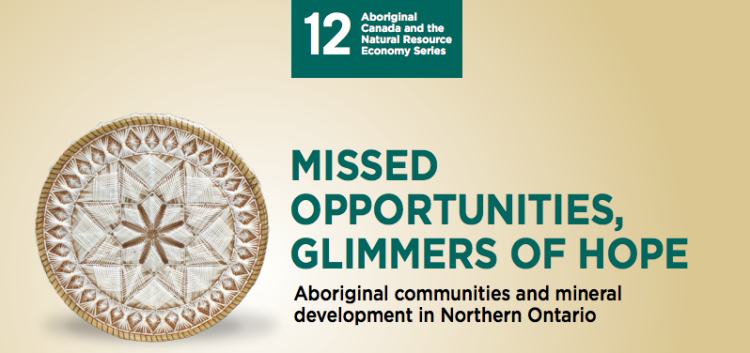
The large-scale mineral deposit in Northern Ontario referred to as the Ring of Fire holds immense potential to bring unprecedented prosperity to Indigenous communities. But a turbulent past and ongoing conflict between First Nations, governments, and mining companies leave much of the mineral potential significantly untapped.
In a report released yesterday by the Macdonald-Laurier Institute, co-authors Heather Hall, professor in the School of Environment, Enterprise and Development, and Kenneth S. Coates, MLI’s Munk Senior Fellow in Aboriginal and Northern Canadian Issues, chart a path forward through the conflict.
Acknowledging the problems of the past and a commitment by all parties to be fair, accommodating and respectful in the future, the authors say, are central to positive progress. "Currently, key stakeholders are continuing to debate issues such as the responsibility for infrastructure development and support for First Nation communities across much of Northern Ontario."
Many Indigenous communities in Northern Ontario suffer from serious social and economic challenges as well as extreme infrastructure deficits that have existed for years, including limited and non-existent road access, a lack of clean drinking water and overcrowded housing. But mining, the report asserts, should not be the spark that generates government investment to address these pressing infrastructure, education, and social needs.
Drawing on lessons learned from across Northern Ontario and Canada, Hall and Coates provide recommendations on how to improve relationships amongst stakeholders and move forward with the Ring of Fire:
- Build a stronger understanding between government, mining companies, and Indigenous communities: It is important that the government create certainty around fees and the permitting requirements for mining companies. The provincial government should lead with industry on the consultations with Indigenous communities, rather than delegating to companies as it has done.
- Overcome disputes about interpreting the treaties: The federal government should make a clear declaration on the importance of the historic treaties in Northern Ontario, paving the way for a new nation-to-nation approach.
- Build infrastructure: The Ring of Fire Infrastructure Development Corporation should have representation from Aboriginal groups, industry, and the federal government. The province needs to lead on determining where key infrastructure should go and what kind rather than waiting on industry to set the agenda for the province. Collaboration with Indigenous communities and industry is essential.
- Build regional plans and agreements: The provincial and federal governments in partnership with Aboriginal communities need to develop plans and agreements that resolve the longstanding social and physical infrastructure needs of communities. Mining should not be the spark that brings Northern services in line with provincial norms.
- Strengthen Community readiness: All stakeholders should access available resources and share best practices on community readiness. However, leadership from the provincial government is needed to close the implementation gap on policies and agreements.
- Encourage Indigenous ownership options: Greater consideration should be given to facilitating Indigenous ownership options in the natural resource sector. Equity participation is likely the next wave in Indigenous engagement and steps should be taken to accelerate this option in northern Ontario.
- Ensure cumulative environmental impacts are part of the review process: In Northern Ontario, particularly in the Ring of Fire, greater attention should be paid to an anticipatory environmental review process that examines cumulative impacts and takes a broad view of the potential ecological disruptions from resource activities.
- Focus on creating a strong process: Companies that approach Indigenous communities in an open, non-confrontational manner, communities that listen to company proposals and that seek viable and long-term resolutions, and governments that solve problems, eliminate barriers, and make strategic investments and commitments can, collectively, move the development agenda forward.
Read the full report: Missed opportunities, glimmers of hope: Aboriginal communities and mineral development in Northern Ontario (PDF)